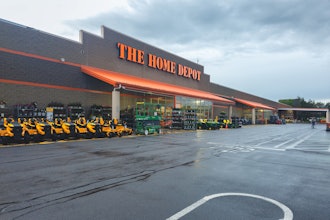
Epicor
i-Report
Industry Insight,
Information
& Intelligence
E-Commerce Best Practices
for Distributors
sponsored by:
presented by:
2E-Commerce Best Practices for Distributors
Distributors that offer e-commerce are part of a market that, according to market research firm Forrester, grew online B2B
sales from $559 billion in 2013 to approximately $780 billion in 2015, almost 40% growth in 2 years. That figure is expected
to grow another 40% to surpass $1.1 trillion by 2020. E-commerce has been widespread for 15 years now in the consum-
er market, and while distributors were initially slow to join the movement that retailers started, it’s become mainstream. In
Industrial Distribution’s 2016 Survey of Distributor Operations, 56% of respondents said their company offers e-commerce,
and of that, more than 24% said that online sales are responsible for at least 11% of overall revenue. Going further, more
than 68% of respondents said they expect their 2016 online sales to increase over 2015.
Just as distributors’ product offering has grown to look increasingly alike across the market, so too have their
websites. As more and more small and mid-sized distributors start to offer e-commerce or enhance their exist-
ing platform, leading companies to look for ways to continuously differentiate and separate themselves from the
crowd. Distributors need to address the question, “What is going to make a customer choose to visit and buy
from my website instead of my top competitors that sell the same products I do and are a click away?”
The evolution of B2B e-commerce has produced reoccurring do’s and don’ts for distributors, which will be
covered here. Whether a distributor has just started an online sales platform or has been a player in the
e-commerce game for 10 years or longer, there are basic tips to keep in mind going forward.
Don’t Bite Off More Than You Can Chew
All distributors would like to have a home-grown, native e-commerce platform. But many small and mid-sized distributors
can’t afford it. Building and implementing e-commerce can get expensive, and making such a large investment without hav-
ing enough technical expertise in-house to support it can be a large mistake. And, just throwing a little money into a website
that lets customers click-and-buy products isn’t enough. To provide customers with an engaging, easy buying experience
with the support to back it up is quite an endeavor.
Those distributors without the means to provide all this from scratch still have options. They can enlist the service of an
e-commerce provider, or utilize available software. When going the software route, it has proven to be simplest and most
effective for the e-commerce system to be directly integrated with the distributor’s ERP system to create a seamless flow of
orders. E-commerce/ERP integration can be a large hurdle for distributors who build their own platform.
“That, in and of itself, can become a major problem and it seems to have been in the recent past for some distributors who
did it themselves,” said Epicor Software Corporation’s Michael Goeke during a recent interview with Industrial Distribution.
“Often, they ended up with multiple databases and a lot of maintenance costs that possibly can be avoided today.”
Goeke is Product Marketing Manager at Epicor, a leading provider of industry-specific business software designed around
the needs of manufacturing, distribution, retail and services organizations.
“What is going to make a
customer choose to visit
and buy from my website
instead of my top
competitors that sell the
same products I do and are
a click away?”
Be Mobile-Friendly
Today’s B2B customer is rarely more than five feet from their smartphone, which they use to browse products and make
purchases at a continuously growing rate. B2B mobile commerce is fast becoming as important as overall e-commerce.
Customers now expect to be able to shop at any time and location. To meet these demands, a distributor needs to provide
a mobile viewing experience that is consistent with its full website. While only 31% of respondents in Industrial Distribution’s
Operations Survey said their business currently offer a mobile app for their website, that figure is up 41% from the 2014
figure.
A website at least needs to have the same look and feel on a mobile device as when on a desktop
or laptop computer. Requiring the customer to zoom out or scroll to view the whole webpage is an
immediate turnoff. A mobile app can be a large project, however, requiring technical resources and
funding that many distributors can’t provide. An app can be bypassed as long as an e-commerce
website is responsive to mobile devices. Websites built with CSS media queries, image resizing and
flexible grids will accurately display website content and functionality on smartphones and tablets.
Software providers that offer mobile-responsive websites can take care of this issue.
“When you’ve got the device-responsive front-end, there’s really less need (for an app),”
Goerke said. “You’re seeing everything you can see on that particular size display.”
Make Use of Sales Order Automation
As the online portion of distributors’ total sales continues to grow, it creates a higher volume of email order notifications to be
processed by a sales team. This is time that can be better spent elsewhere. Utilizing a sales order automation provider can
take care of this issue. Such a provider takes care of routing email, fax and print orders into a company’s ERP system, elim-
inating human error and providing complete visibility. This can be done from a distributors’ website orders and from partner
websites. Sales order automation leads to faster order processing, providing customers with order confirmation faster than if
manually done, which also speeds up the shipping process.
Another proponent of sales order automation is that it eliminates the need for the customer to enter their orders, item by
item, into the distributor’s web portal. “Asking B2B customers to change the way they do business is not acceptable. Most
already have their own longstanding unique internal processes in place, requiring purchase orders to receive against,” said
Brent Halverson, president and CEO of ecmarket, in a 2016 article for Industrial Distribution. “Since distributors are in busi-
ness to serve their customers, implementing a change that requires customers to do more work for the distributor’s benefit
would most likely spur them to look elsewhere.”
3
E-Commerce Best Practices for Distributors
4Show Customer Reviews on Your Website
In 2015, brand engagement firm Sullivan surveyed mid-to-senior level executives responsible
for buying products and services, showing that 93% of respondents want to see peer reviews
when B2B shopping. Many customers make purchasing decisions based on customer reviews.
With so many distributors involved in a “race-to-the-bottom” type of lowest-price strategy,
reviews can be a crucial make-or-break factor. User reviews eliminate doubts potential custom-
ers have about a product, or can help product selection. In this area, a numerical or star rating
system isn’t quite enough.
“While customer reviews are important, if they are all glowing or if there is no actual review
– just a star rating – the purchaser becomes skeptical,” said Michael Wilson, vice president
of marketing for Afflink – a provider of strategic procurement and supply chain solutions – in
recent article for Industrial Distribution. “Systems that verify that the reviewer actually
purchased the product discussed can be very powerful.”
Show Need-to-Know Information
Digitizing your SKU catalog and having it all available for online purchase is great, but it’s only a start. Anyone can do a quick
Google search for a product and receive pages of distributor, manufacturer and retail websites, get a plethora of price options
and choose the cheapest option. Your e-commerce website needs to engage potential customers with relevant information.
“Customers want to know that the product or service can perform the needed task,” wrote Industrial Buyers Consortium’s
director of marketing Shannon Fillippelli in a recent blog. “Complete, detailed information from the fabrication, specs,
materials, and the price of the item should be easily available. “
Product information can be efficiently supplemented with video of product demonstrations. Sullivan’s Executive Buying
Behavior Survey found that 92% of executives want to see a product in action.
E-Commerce Best Practices for Distributors
5Don’t View Amazon as Just a Competitor
There’s no doubt that whatever products a distributor sells can also be found on Amazon. Therefore, a mindset of trying to
outsell, or even take market share from Amazon, is unrealistic. Instead of trying to compete with such a big e-tailer, distribu-
tors can put Amazon to work for them as either a starting e-commerce platform, or an additional one. Amazon can be
especially handy for selling off excess inventory. Distributors can take advantage of Amazon’s vast technology platform,
logistics capabilities and mature marketplace as a supplement online channel. Distributors typically don’t want their customers
to know they’re selling via another retailer, but since most Amazon sellers aren’t represented as themselves, this
tends to not be an issue.
Some distributors have been hesitant to begin e-commerce because they feel it will change their customer’s
perception of their customer-centric business. This doesn’t have to be. Epicor’s Goeke says distributors can
combine their level of customer service with Amazon’s model of logistics service by offering an Amazon Prime-
like service to top clients.
“Distributors that are local, can understand the customer and shake hands with them can provide a logistics
excellence service similar to Prime,” Goeke said. “Maybe for just your best customers, maybe by invitation-only.
It’s going to help differentiate them and get them up to a level of logistics service quality that can content with
Amazon’s presence.”
Goeke said distributors can compete with Amazon in this sense while also utilizing the e-tailer to sell excess
inventory in a hybrid model he calls “coopetition.”
“I don’t think you accept Amazon as a competitor. You adapt your strategy and say, ‘how are they going to help me be
successful?’ Goeke said. “It can be through one of their services, selling through them or just taking their best practices and
putting them into your business.”
“Instead of trying to
compete with such a
big e-tailer, distributors
can put Amazon to
work for them as
either a starting
e-commerce platform,
or an additional one.”
E-Commerce Best Practices for Distributors
6Distributor E-Commerce Today
There are certainly many more best practice tips for distribution e-commerce. These are among the most pertinent. The
effectiveness of them can vary based on the market the distributor is trying to reach. This is increasingly apparent when more
tangential tactics such as social media are applied.
B2C e-commerce had a significant head start over B2B, and in many ways distributors are still trying to catch up. In doing
so, distributors are taking many lessons learned from B2C in terms of creating a total user buying experience. It has
become more critical for distributors to put themselves in a consumer mindset when it comes to online sales and recognize
the features and conveniences that their tech savvy B2B buyers now expect and borrow the best B2C practices unabash-
edly for their own customers. This forces distributors new and seasoned in e-commerce to either evaluate or enhance their
e-commerce strategies. Ten years ago, just offering e-commerce put a distributor ahead of the curve. Those days are in the
past. To stay competitive today, leading distributors need to offer their customers a modern online buying experience that
reflects the company’s unique value and the market it serves.
About This Report
The information in this i-Report was researched and produced by Industrial Distribution in conjunction with Epicor. Statistical
data was researched and compiled by Advantage Business Media in April 2016.
About Epicor
Epicor Software Corporation (www.epicor.com) provides industry-specific business software designed around the needs of
manufacturing, distribution, retail and services organizations. Epicor’s more than 40 years of experience with its customers’
unique business processes and operational requirements is built into every solution – in the cloud, hosted or on premises.
E-Commerce Best Practices for Distributors






















